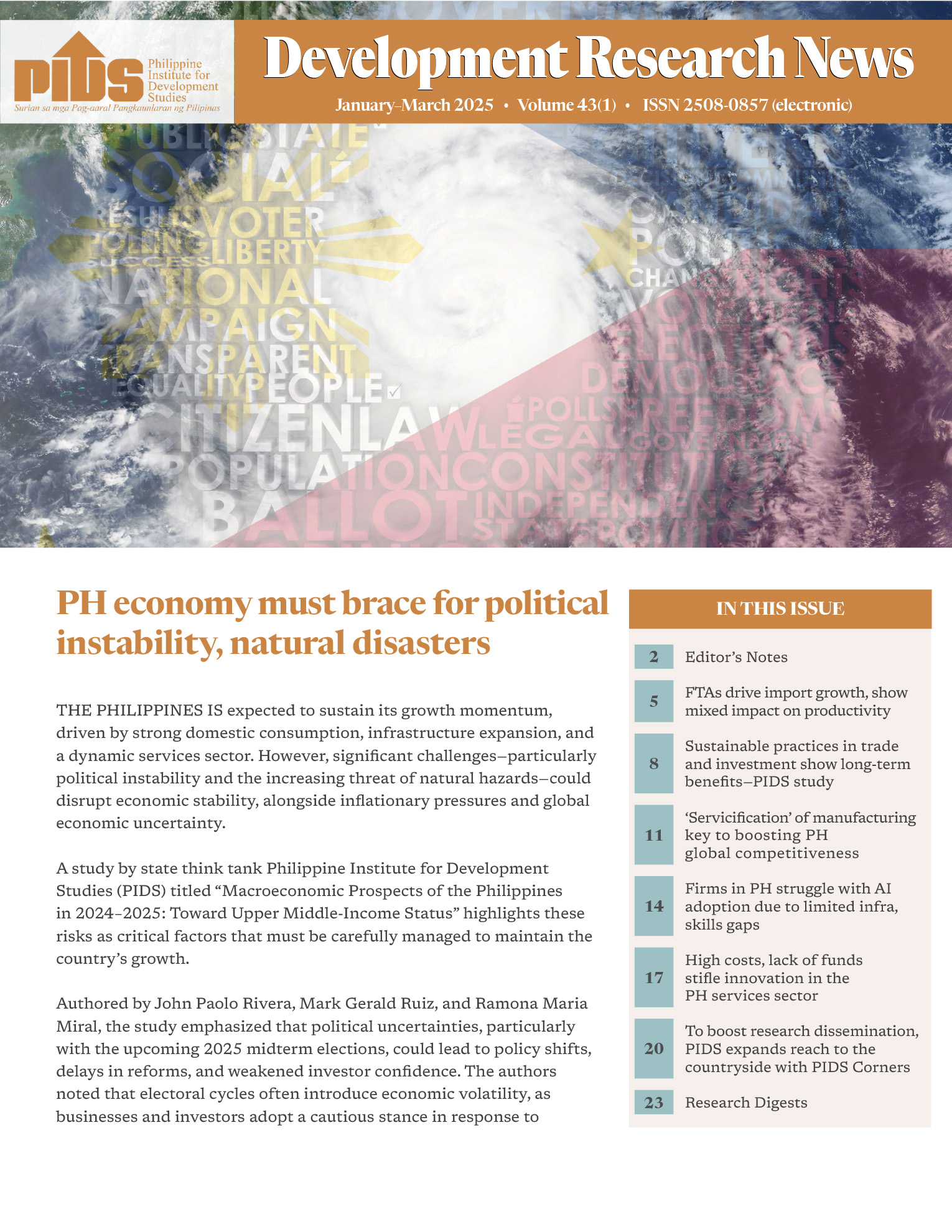The Philippines’ external debt service burden for January 2025 shrank by more than half from a year earlier, with principal payments falling sharply to less than 10 percent of the total, official data showed.
Analysts saw the decline in overall external debt service burden also being in line with government’s move to reduce the country’s exposure to foreign exchange risk.
Data released by the Bangko Sentral ng Pilipinas (BSP) during the Holy Week showed that the debt service burden dropped by 54.3 percent to $799 million in January 2025 from $1.75 billion in January 2024.
External debt service burden refers to the country’s total amount to pay for loans from foreign lenders, including principal and interest payments.
Of the total external debt service, 9.9 percent, or $79 million, was for principal payments, while the remaining 90.1 percent, or $719 million, was for interest payments.
In January 2025, principal payments were 92.5 percent lower than $1.06 billion made in January 2024. Interest payments rose 3.7 percent from $693 million.
Full-yr 2024 external debt
In full-year 2024, the country’s total external debt, or borrowings owed by residents to non-residents, stood at $137.63 billion, 9.8 percent higher than the full-year 2023 amount of $125.39 billion.
The debt ratio in 2024 was 29.8 percent, higher than the preceding year’s 28.7 percent.
The BSP releases its external debt statistics on a quarterly basis. Data for the first quarter of 2025 are not yet available.
‘Welcome development’
John Paolo Rivera, senior research fellow at Philippine Institute of Development Studies, in a Viber message on Sunday said the sharp drop in external debt service burden in January 2025 is a “welcome development.”
“This likely reflects a combination of favorable debt management strategies such as liability management and refinancing, as well as fewer scheduled maturities for the month,” Rivera said.
He added that the lower debt service burden “eases pressure on the country’s dollar reserves and supports fiscal space, especially amid global uncertainty.”
“However, we should continue monitoring interest rate risks and potential refinancing challenges in the coming quarters,” Rivera said.
Cut forex risk
Michael Ricafort, RCBC’s chief economist, on Sunday said the lower external debt service burden came amid the government’s efforts in recent years “to reduce the share of foreign borrowings in the total borrowing mix to reduce foreign exchange risks entailed in foreign borrowings.”
“The decline may largely be attributed to a lower amount of foreign debt maturity or principal payments at the start of the year as compared with the same month in the previous year,” Ricafort said.
“This is also partly consistent with the budget surplus at the start of the year, after the seasonal increase in the budget deficit and debt payments towards year-end—a consistent pattern seen in recent years, thereby slowing down upon crossing the new year,” Ricafort said.












